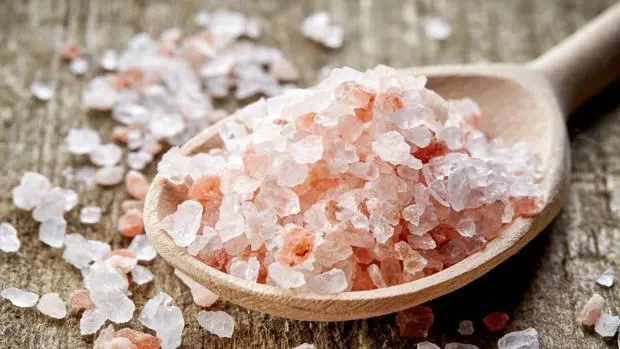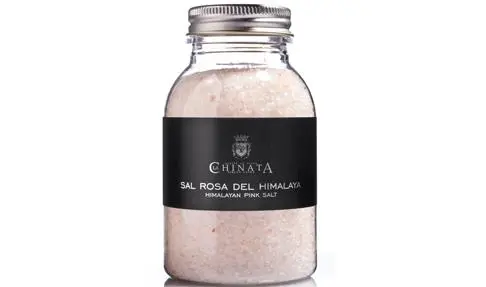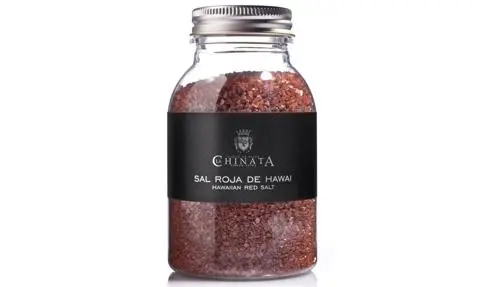Contents

When we cook, we add salt without thinking about it and when we eat we look at it only if it is absent or scarce. Salt is often the unseen trick on a plate. However, just broaden the spectrum a little beyond traditional table salt, and this low-key ingredient becomes one of the main players in a roast beef, smoked fish, salad or soup. We have selected ten varieties of gourmet salts that make a difference in the kitchen.
Ibiza salt flower
What is behind each flake of Ibiza’s fleur de sel is pure poetry. Throughout the summer, it forms on the surface of the seawater of the salt flats (in the natural reserve of the Ses Salines Natural Park d’Eivissa) a thin layer of salt crystals. At the beginning of September, these crystals are collected by hand using a kind of butterfly net and then kept in bags for a year. The wind and the sun are solely responsible for a completely natural drying process. Moist and crunchy, this salt is very rich in iodine, magnesium, potassium, fluoride, iron and calcium. The price of a kilo of this jewel it can be a hundred times higher than that of common salt.
Cyprus pyramid salt
Neither thick, nor fine, nor flaky. Cyprus Salt Crystals They are shaped like small perfect pyramids and it is Nature itself, in the presence of precise climatic conditions, who sculpts them. It is not surprising that this salt from the Mediterranean island is highly appreciated in the kitchen, as it adds a particularly crunchy counterpoint to meat dishes, fish, foie, soups, vegetables and salads. Light to the touch and on the palate, of a pure white color, natural, without additives, the salt of Cyprus is one of “princesses” of Mediterranean salts.
Himalayan pink salt

A characteristic pink color, extraordinary purity, a high concentration of trace elements –among them iron, responsible for this color– and a versatility that goes far beyond its use in the kitchen. The Himalayan pink salt is the queen of rock salts and has earned her nicknames of “White gold” y “pink gold”. A pinch of this salt, less flavorful and slightly more bitter than sea salt, is the perfect finish for grilled meat dishes, fish and vegetables.
Sal negra de Himalaya o Kala Namak
Less known than the rose, but no less peculiar for that, the black salt from india or kala namak is a good option for those on a low-salt diet, as these small dark gray stones contain very little sodium. Secondly, are rich in hydrogen sulfide, due to its volcanic origin and this also gives them a slight smell of sulfur. Simply put a little bread, better if hot, olive oil and a pinch of this salt to release a surprising fried egg aroma or cooked without a trace of egg. Which explains why it has become a good dietary alternative also for those who follow a vegan diet.
Get out of the Murray River
We cannot say that the salt is sweet, but it is soft. The Utah sweet salt, for example, coming from the Bonneville Mines, in Salt Lake City, in Utah, United States, it almost fell apart when touched the plate. Something similar happens with the salt of the Murray River, the most important in Australia, which is presented in peach-colored flakes. Its production process takes advantage of the natural evaporation of the salty water that carries the river. It is a salt very rich in magnesium and calcium and relatively low in potassium and iodine. Because they are so soft, “sweet” salts become the perfect allies when we want to do something as absurd as salt a sandwich or a chocolate ice cream.
Salt of Añana
Andoni Luis Aduriz, Eneko Atxa, Martín Berasategui, Dani García, Joan Roca. Are just some of the chefs who bet in their multi-star kitchens for the salt of Añana. From the town of Alava Salinas de Añana, This salt is the result of the natural evaporation of the salty water from the springs of the Valle Salado (which about 200 million years ago was under the sea) and of a process of artisan production. For this reason and because of its link with the environmental and cultural landscape from which it is born, this salt is classified as a Slow Food Bastion. The Salt of Añana It is available in four formats: mineral, fleur de sel flakes, liquid and, the most peculiar of all, a scoop of salt to grate.
Smoked salt from the Sierra Nevada
Another very interesting Spanish salt. It comes from an underground river of salt water in the Sierra Nevada, Granada. Through a natural process of evaporation, a white salt is formed that is then smoked in oak wood. The result is absolutely amazing: a freshly opened jar of this salt gives off an intense smoky aroma which makes it the ideal complement for roast meats, smoked fish or fish sausages.
Hawaii Red Salt

With a texture similar to that of brown sugar, the hawaii red salt It is a very powerful sea salt and not only from the point of view of the flavor, especially lively, but also from the point of view of the composition. Its production process, which includes the addition of red clay of volcanic origin during drying, makes this salt very rich in iron, in addition to giving the grains that orange-red color. Also known as’alaea (red clay), not to be confused with other gourmet salt, the black woman from Hawaii, which is obtained through a similar process in which sea salt is mixed with activated charcoal.
Namibian Pearl Salt
If it is worth using an unusual salt in a dish, it is especially for its texture. This is especially true for Namibian salt pearls, collected along the coast of the African country where the oldest desert in the world meets the cold waters of the Atlantic Ocean. Its texture is not crunchy, but rather hard. Small salty candies destined to become the unexpected detail of any treat. This salt also has a high wisdom, something that recommends moderate use.
Blue Salt of Persia
Small crystals that could well be rough diamonds and sapphires. The blue salt of persia it is so beautiful that it is almost a shame to use it to spice up a dish. In fact, it is also often used to frost the rims of cocktail glasses. Coming from northern Iran, this rock salt must its very rare blue color to the presence of sylvinite, a potassium mineral. Crunchy, slightly salty and with a spicy aftertaste, blue salt knows how to take advantage of raw fish and white meat dishes. It is considered one of the most valuable and exclusive salts in the world.









